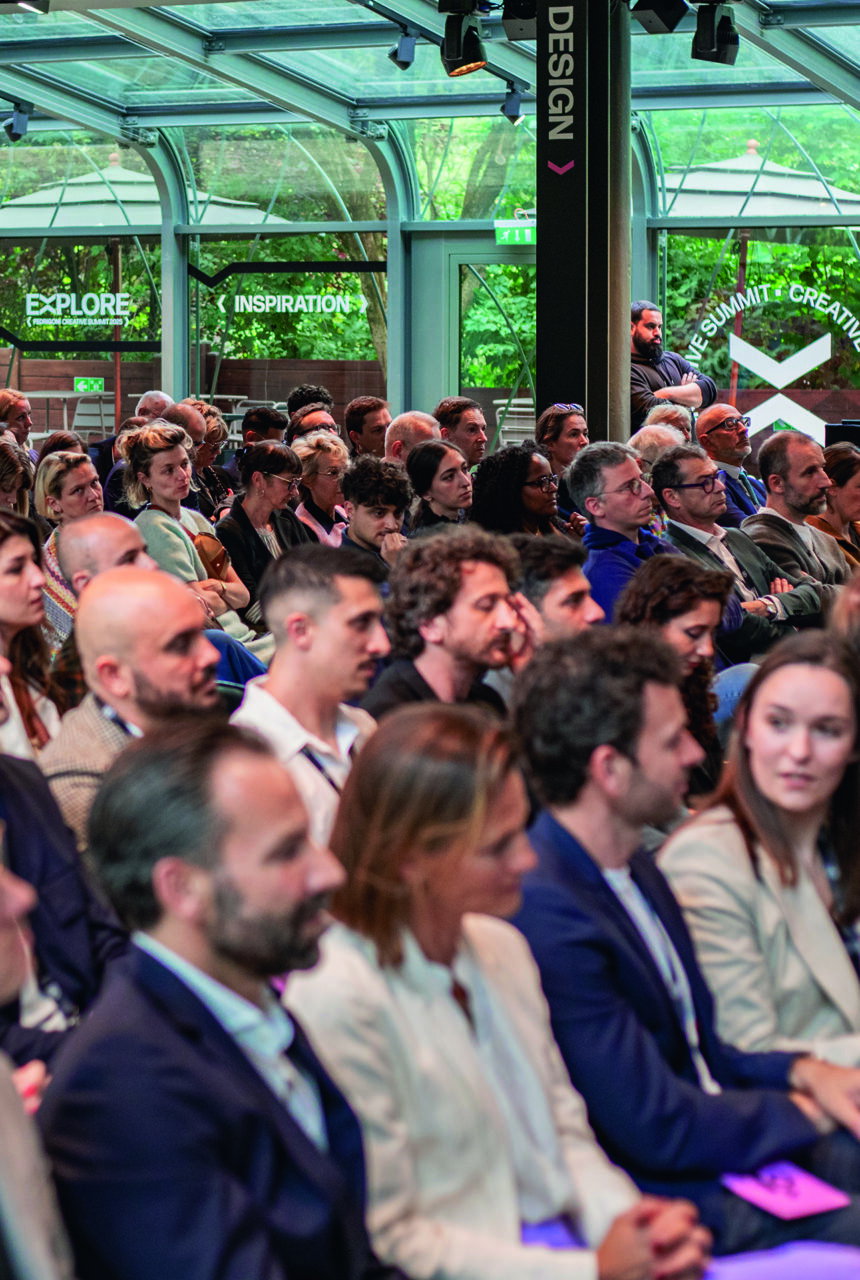
By late afternoon on Thursday 5 June 2025, in the grand setting of Pavillon Gabriel in Paris, the wait was over. In the run-up to the official announcements, we had been able to inspect a room filled with artefacts shortlisted for the Fedrigoni Top Award. Now the crucial information about who had won first, second, third and special mention for each category could be revealed. Top Award curator Chiara Medioli Fedrigoni and all eight jury members came on stage (in turns) to present prizes to winning designers who had come from across Europe (and further afield) to join the celebrations.
The first to be announced were the awards for Packaging, won by a charming system of rice packaging for Hera nei Campi designed by Multiverse Studio (Salerno, Italy), using the typeface Romie by Margot Lévêque. Second prize went to a box design for Istriana olive oil by Croatian Studio Tumpić / Prenc, which draws on the reddish ‘Terra Rossa’ soil of the area. In third place was Huanghuang’s pizza-box-like design for mooncakes made for the traditional Chinese Mid-Autumn Festival.
The second announcement, for the Publishing category, contained a surprise. The jury had been unable to reach agreement on a single winner. For the first time in Top Award history there would be three joint first prizes: Dead End; UXUA UTOPIA: A Very Gifted Guesthouse; and Mezzocane.
‘There were some heated discussions,’ said Belgian designer Paul Boudens, in conversation later. ‘I was like, I hate this. I don’t do grey. I’m like black or white. Hate, love. Other people say: “You hate this, I love this!” And then the discussion starts, of course.’
The next category, Label, was presented by Thingular’s Sébastián Yañez from Argentina. The winner was Sentinella, whose seductive, three-dimensional flower labels captivated many in the room, followed by Gatto Rivera’s ultra-cool monochrome branding for The Sneak Wines. Third prize went to Idem Design’s tactile olive oil label for Puglia client Sulcus.
‘I liked the label category very much because it’s the one I feel more connected to,’ said Yañez. ‘Before, I didn’t talk too much, but when we started judging the labels, Simon [Esterson, the chair] said, okay, this is your category. What do you think? The world of labels occurs on such a small piece of paper, so it’s fantastic. I’m not saying the other categories are less important, but in labels you have such a tiny space in which to express and communicate.
‘I love it when we don’t have the same ideas about projects,’ said Gustavo Greco. ‘I always learn a lot when I’m in the jury process.’
There were also prizes for Creative Communication and Graphics Applications, which ranged from a handmade book from Germany, to a small ‘YES / NO’ decision-making tool from the Czech Republic. However the big news of the day was the outstanding collection of winning student work under the aegis of Young Talents.
Considering the student entries, Medioli Fedrigoni mused upon whether the quality of this category was because students were ‘free from industrial feasibility and budget constraints … free from time pressure from clients … or because they went to good schools, with great teachers.’

